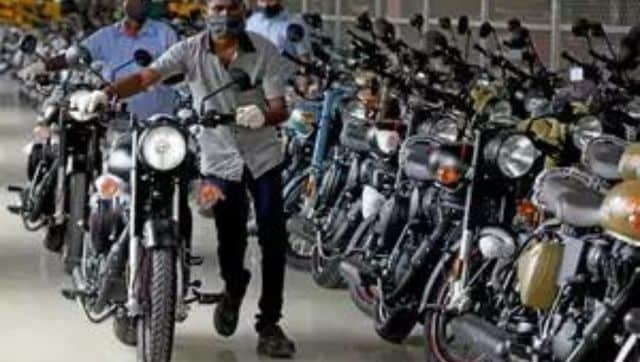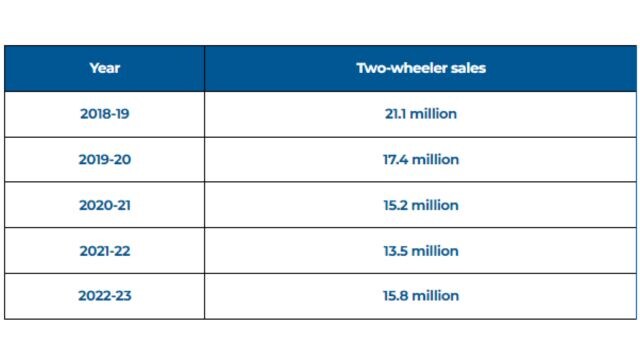Bike News: There’s a generational change in world’s biggest two-wheeler market

Representational image. AFP
The entry of the Scrambler 400 (introduced by Bajaj Auto along with British luxury bike maker Triumph) and the X440 (born out of the Hero Moto and Harley Davidson tie-up) — in the same week — may be a sign of generational change in the Indian two-wheeler space. The rationale could be the same for Maruti Suzuki to go for its most-expensive car.
The last time India, the world’s biggest two-wheeler market, saw the bar rise so significantly was around the turn of the century.
While still a hub for commuter bikes (about 100 cc) like the iconic Splendour and the TVS Victor, Indians embraced the (about 150 cc) Bajaj Pulsar and Hero CBZ (when it was still called Hero Honda) with a surprising amount of excitement.
Bajaj Pulsar (2001)
The motorbikes that one could see on Indian roads changed swiftly thereafter. Within a few years, 150 cc became, pretty much, the baseline for the category, at least in the big cities. These bigger bikes made their way into the smaller towns and villages, too. The current lineup of fancier bikes may seem counterintuitive at a time when entry-level two-wheelers aren’t selling fast enough.
Of 15.8 million two-wheelers sold last year, more than 4.8 million were entry-level models compared to 6.6 million four years earlier

One way to explain this is that the poor aren’t able to afford new two-wheelers or aren’t feeling confident when inflation is pinching their pockets and a series of crises are capping their potential. The widening gap between the rich and the poor, a global phenomenon, may make it more lucrative for industrialists like the Bajajs and Munjals to focus on those who have money to splurge.
Eicher Motors’ Siddhartha Lal rode this wave for an entire decade before his bigger peers decided to throw their hats into the ring.
Royal Enfield Himalayan
Clearly, the bar has been raised for what the bikes on Indian roads will look like in the next decade. And, if past experience is proof, early birds don’t always rule the roost. Pulsar had a headstart of many years and continues to be a top-selling model, but there’s enough space in India for more players. The dominance of Honda Unicorn and Activa clearly demonstrates that if there’s value for money, there are enough buyers in India.
Carmakers change direction before the bike makers do
The winds of change have been visible in cars a few years before the two-wheelers both in the 1990s as well as in the 2010s.
Tata Sumo hit the roads in 1995 and ruled the roads for more than a decade. In 1998, Japanese giant Honda entered India with its swanky Honda City, which, at the time cost about Rs 7 lakh, 25 years before now. It went on to have a cult following that continues to this day.
If the price was the only factor, we would see more Opel Astras and Daewoo Cielos on the roads, which were launched before Honda City and were relatively cheaper. Even the Mitsubishi Lancer had a longer ride on Indian roads than its cheaper alternatives. Tata Nano, the world’s cheapest car, did not sell like hotcakes.
A similar wave of change has taken place in the Indian car market in recent years. Carmakers have moved from cost-efficient cars with high mileage to sports utility vehicles (SUVs) like Mahindra’s XUV series, Maruti’s Brezza, and Kia Seltos.
Yes, India is a price-sensitive market and there are too many have-nots in the country. But that’s only half the story. The other half is that of a new generation of booming, aspirational middle class with different tastes. The aesthetics of a 20-year-old today is very different from what it was a couple of decades ago. To offer them something suited to their taste buds seems more rational. They might want to pay more for it, too.
It was not unusual, even a few years ago, to spot a Kawasaki Ninja or KTM on Indian city roads and it won’t always be a movie star or business owner riding it.
So, the success of the Scrambler 400 or the X440 will depend not only on the price and the features but also on how ‘cool’ they are. The success of Kia, a relatively new player in the market, bears witness to the fact that even late entrants can rake in the moolah.
Yes, not everyone in the country may be able to afford the new motorbikes from Bajaj-Triumph and Hero-Harley Davidson right now. But history would tell them to keep their hopes up.
For all the latest Technology News Click Here
For the latest news and updates, follow us on Google News.
